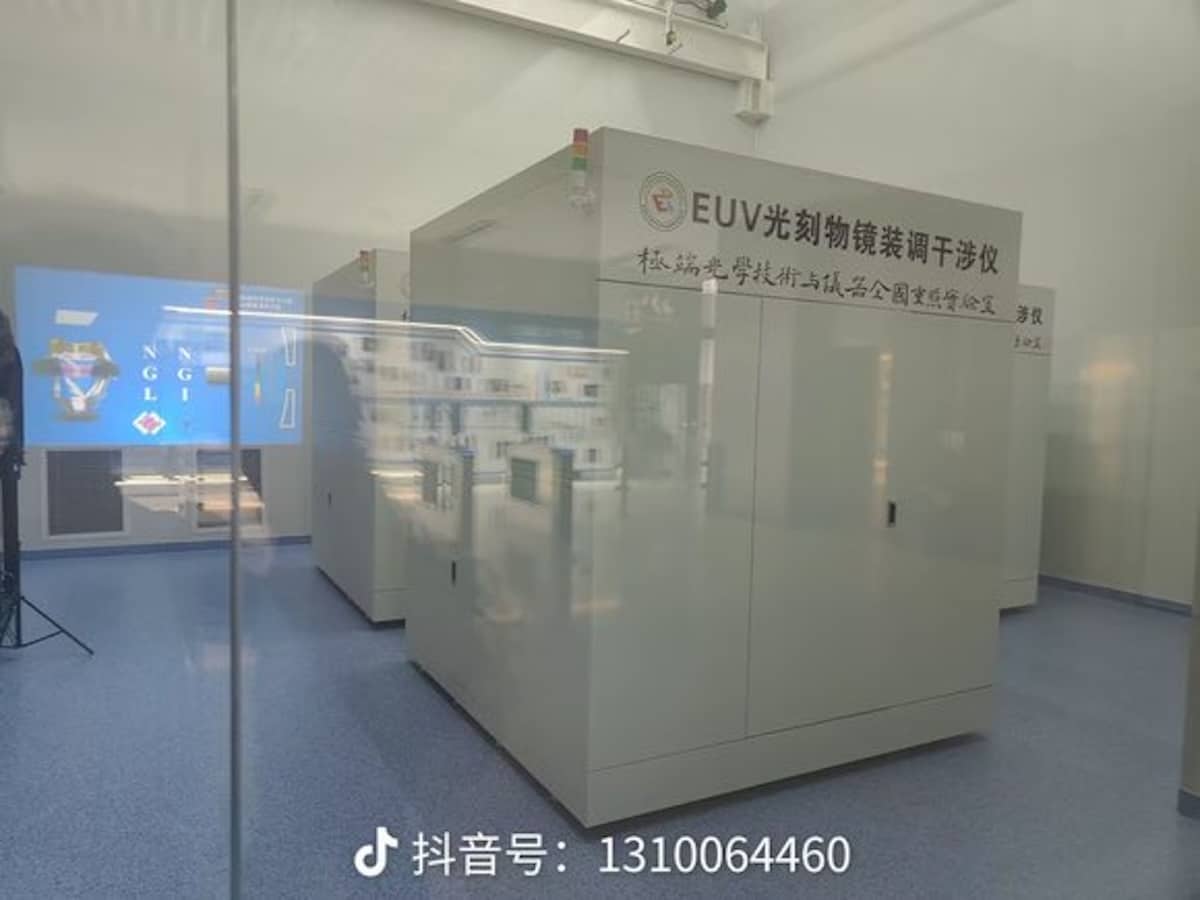Here’s the translation to American English:
An Unexpected Breakthrough that Disrupts Technological Dependence
China has taken a decisive step in the race for semiconductor manufacturing by developing its own Extreme Ultraviolet (EUV) lithography machine, a fundamental technology for the production of advanced chips. This achievement poses a direct challenge to ASML, the Dutch company that until now has been the only one capable of manufacturing and marketing this type of equipment.
The advancement has been confirmed with the commencement of tests for the new lithographic machine at Huawei‘s laboratories in Dongguan. The equipment uses a laser-induced discharge plasma (LDP) technology, an alternative to the laser-produced plasma (LPP) utilized by ASML. While still in the experimental phase, this development marks a milestone in the Chinese semiconductor industry and could redefine global competition in the sector.
China Breaks the U.S. Blockade with Its Own EUV Technology
For years, the United States has imposed strict restrictions on the export of advanced technologies to China with the goal of halting its progress in the chip sector. Among these restrictions is the prohibition on selling ASML’s EUV machines to the Asian giant, which has hindered Chinese companies from accessing the most advanced manufacturing processes.
However, far from falling behind, China has demonstrated its capacity for innovation. In 2023, Huawei surprised the world with the launch of its Kirin 9000S chip, manufactured using 7 nm technology by SMIC, amid technological limitations imposed by the U.S. Later, in 2024, ASML’s CEO confirmed that China had produced 3 nm chips, a milestone that seemed unattainable after the blockades.
Now, with the development of its own EUV lithography machine, China is moving towards self-sufficiency in semiconductor manufacturing, reducing its dependence on foreign suppliers and laying the groundwork for a fully sovereign industry.
LDP Technology: China’s Alternative to ASML’s System
The new Huawei machine employs a light source based on laser-induced discharge plasma (LDP), which generates EUV radiation of 13.5 nm. In this process, tin is vaporized between two electrodes and becomes plasma after a high-voltage discharge. This technique serves as an alternative to ASML’s LPP, which utilizes high-energy lasers and FPGA circuits optimized over years of research and development.
While ASML’s system remains more refined and efficient, the Chinese development represents a turning point, as it enables the production of next-generation chips without relying on foreign technology. If the tests are successful, China could begin to manufacture its own EUV lithography machines on a large scale, challenging ASML’s monopoly in this market.
Implications for the Global Semiconductor Industry
The development of an EUV machine in China carries significant implications for the global semiconductor industry. If the Asian country successfully refines this technology and brings it to market, a new front of competition with ASML would emerge, which has dominated this market with the support of Europe and the United States.
Additionally, this advancement could alter the manufacturing strategies of companies like TSMC, Samsung, and Intel, which rely on ASML for access to the most advanced processes. By consolidating its own lithography technology, China could provide a viable alternative to these manufacturers, ushering in a new phase in the technological rivalry among powers.
On the other hand, Chinese companies like SMIC and CXMT could benefit directly by gaining access to more advanced manufacturing equipment, enabling them to close the gap with industry giants like TSMC and Samsung in the development of next-generation chips.
Can China Compete with ASML in the EUV Lithography Market?
Despite this advancement, there are still significant challenges for China to compete on equal footing with ASML. The Dutch company has refined its EUV technology over decades and continues to be the benchmark in this field. Moreover, its close ties with the United States and other Western allies give it a privileged position in the global market.
However, China has demonstrated a capacity for adaptation and innovation that has surprised the industry in recent years. If it manages to refine its LDP technology and manufacture EUV equipment in large volumes, it could become a key new player in the advanced lithography market.
The future of this competition will largely depend on China’s ability to overcome technical challenges and establish an efficient manufacturing infrastructure. What is certain is that the development of its own EUV machine represents a significant step towards technological independence, a strategic goal that the Asian country has pursued with determination in recent years.

